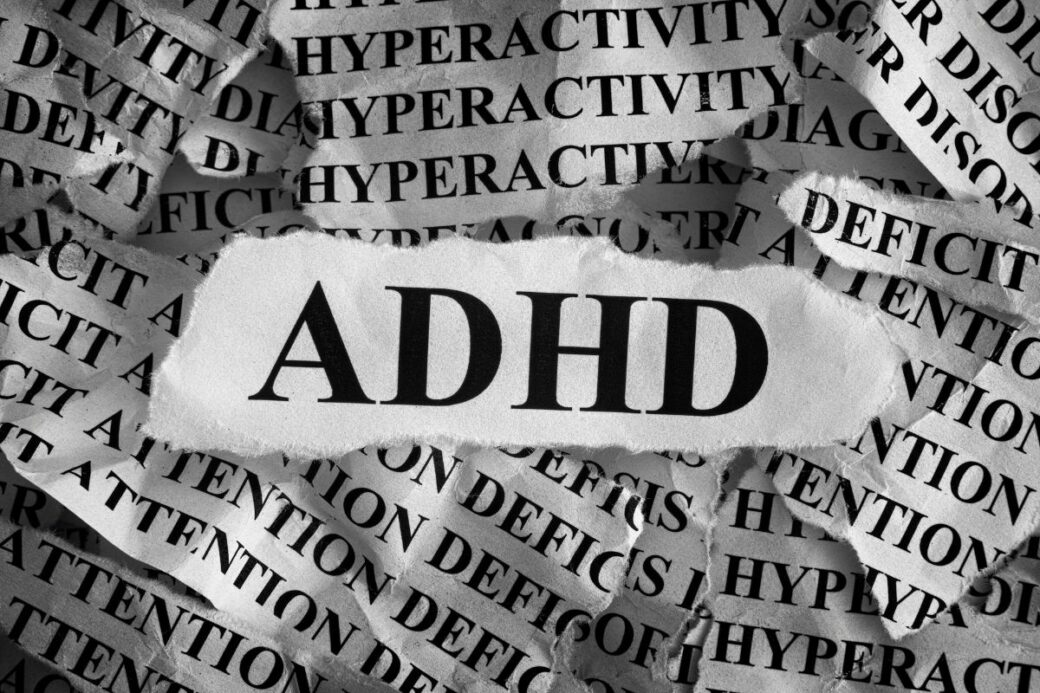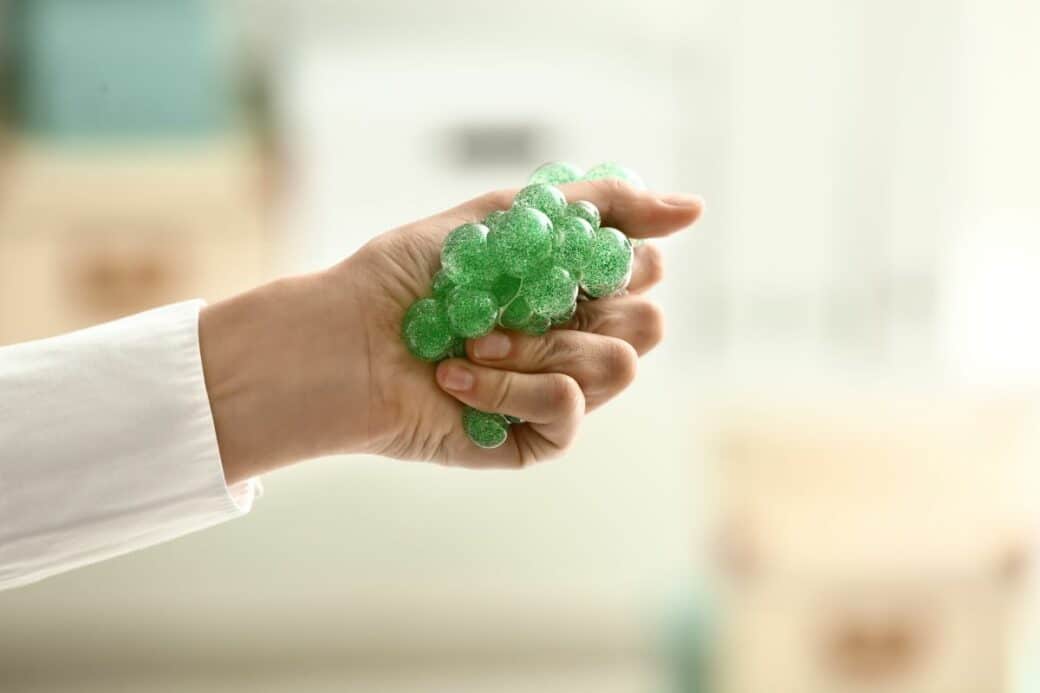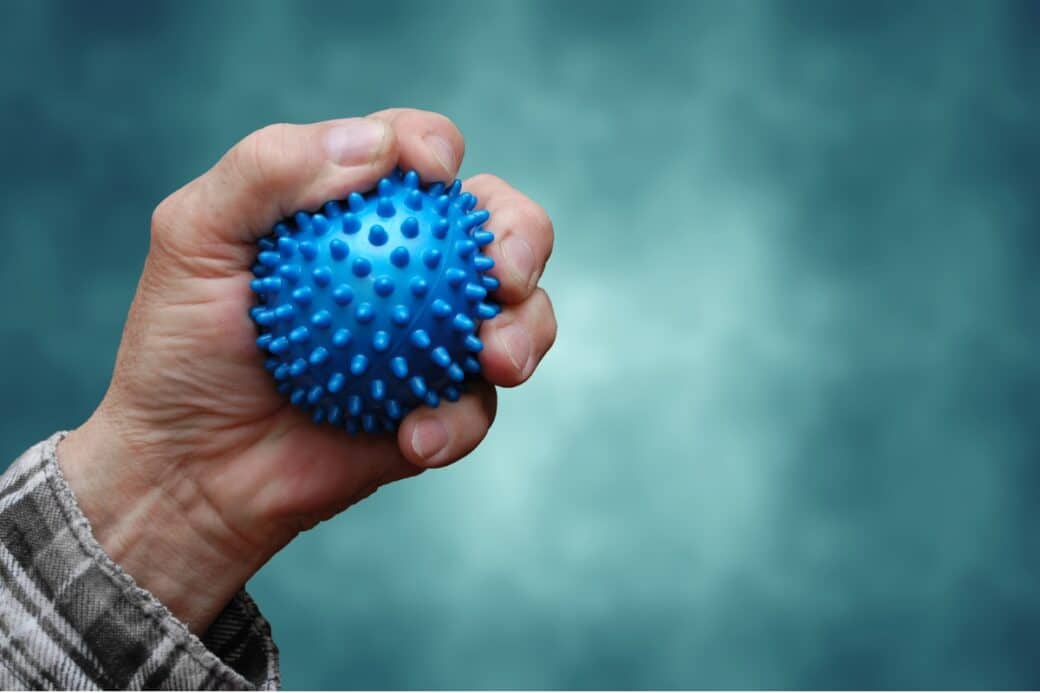Are you looking for a simple and effective way to manage stress and improve focus? Look no further than stress balls for ADHD. These squishy companions are not only fun to play with, but they also provide tactile stimulation that can help calm the mind and promote concentration. Whether you’re a student struggling with distractions in the classroom or an adult trying to stay focused at work, stress balls for ADHD may just be the solution you need. In this article, we’ll explore the benefits of using stress balls for ADHD and how they can help you regain control of your mind.

Stress Balls Adhd: Understanding ADHD
Definition of ADHD
ADHD, or Attention-Deficit/Hyperactivity Disorder, is a neurodevelopmental disorder that affects both children and adults. It is characterized by persistent patterns of inattention, hyperactivity, and impulsivity that can significantly impact daily functioning. People with ADHD often struggle with maintaining focus, impulsivity control, and organization skills. It is essential to remember that ADHD is not just a result of laziness or a lack of discipline, but rather a neurological condition that requires understanding and support.
Symptoms and Diagnosis of ADHD
ADHD manifests differently in individuals, but common symptoms include difficulty staying focused or completing tasks, restlessness, constant movement, excessive talking, forgetfulness, and impulsivity. To obtain a diagnosis, a comprehensive evaluation is necessary, involving a thorough examination of the person’s medical history, clinical interviews, and assessment tools such as questionnaires and rating scales. It is crucial to consult a medical professional specializing in ADHD for accurate assessment and diagnosis.
Struggles Faced by People with ADHD
Living with ADHD can present various challenges. People with ADHD often find it challenging to concentrate, follow instructions, and complete tasks on time. The constant restlessness and impulsivity can also cause relational difficulties and conflicts in both personal and professional settings. Additionally, individuals with ADHD may struggle with self-esteem issues, as they may feel misunderstood or judged by others due to their symptoms. It is crucial to create an empathetic and supportive environment for individuals with ADHD to help them overcome these struggles.
The Impact of ADHD on Learning and Focus
One significant area of impact for individuals with ADHD is learning and academic performance. The difficulty in maintaining focus and staying organized can make it challenging to absorb and retain information effectively. This can lead to frustration and feelings of inadequacy. Furthermore, individuals with ADHD may face challenges in planning and prioritizing tasks, which can hinder their ability to meet deadlines and manage time efficiently. Understanding the specific impact of ADHD on learning and focus is crucial in implementing effective strategies to support individuals with ADHD.
Stress Balls: an Introduction
What are Stress Balls?
Stress balls are small, pliable objects that are designed to be squeezed and manipulated in the hands. They come in various shapes, sizes, and textures, and are typically filled with a soft material such as foam or gel. The repetitive squeezing and releasing of stress balls have been found to have a calming effect on the mind and body, helping to relieve tension and stress.
Types of Stress Balls
There is a wide range of stress balls available in the market, catering to different preferences and needs. Traditional stress balls are usually round and made of foam or rubber. However, there are also more unique stress balls, such as those shaped like animals or objects, which can add an element of fun and playfulness to the experience. Additionally, stress balls with textured surfaces or infused with essential oils provide added sensory stimulation.
Benefits of Using Stress Balls
Using stress balls as a stress-relief tool provides numerous benefits. Firstly, squeezing a stress ball can release physical tension in the hands and arms, promoting relaxation throughout the body. Additionally, the repetitive squeezing and releasing motion can help divert attention away from stressful thoughts, allowing the mind to focus on the present moment. Furthermore, stress balls offer a portable and discreet way to manage stress and anxiety, as they can be easily carried in a bag or pocket.
The Science Behind Stress Balls
Understanding the Mind-Body Connection
The mind-body connection refers to the intricate link between our mental and physical well-being. Various studies have demonstrated that the mind and body are closely interconnected, and mental stress can manifest physically in the form of muscle tension, headaches, and other physical symptoms. By utilizing stress balls, which provide a physical outlet for stress, we can effectively target the mind-body connection and alleviate both mental and physical tension.
Effects of Physical Movement on the Brain
Engaging in physical movement has long been associated with improved cognition and focus. When we use stress balls, the repetitive motion stimulates the fine motor muscles in our hands, activating neural pathways that enhance focus and attention. Additionally, physical movement increases blood flow and oxygenation to the brain, promoting optimal brain function and cognitive performance. Thus, the act of using stress balls can have a significant impact on our ability to concentrate and stay focused.
Stress Ball and Its Role in Soothing Anxiety and Stress
Anxiety and stress can be overwhelming, impacting our mental well-being and overall quality of life. Stress balls act as a simple yet effective tool to quiet the mind and provide relief from these feelings. When we squeeze a stress ball, the rhythmic motion can serve as a form of grounding and distraction, redirecting our attention away from anxious thoughts. This repetitive action also activates the parasympathetic nervous system, responsible for calming the body’s stress response, leading to a sense of relaxation and tranquility.
Using Stress Balls for ADHD

Why Stress Balls are Beneficial for ADHD
The benefits of stress balls extend beyond stress relief and can be particularly advantageous for individuals with ADHD. The physical act of squeezing a stress ball engages the hand muscles, providing sensory input that can help individuals with ADHD increase their focus and concentration. Additionally, stress balls provide a healthy outlet for excess energy and restlessness, allowing individuals with ADHD to channel their hyperactivity into a productive and calming activity.
How to Use Stress Balls for ADHD
Using stress balls as a complementary tool for managing ADHD involves incorporating them into daily routines. Individuals with ADHD can keep a stress ball nearby during tasks that require sustained attention or when feeling restless. During these times, they can engage in squeezing and releasing the stress ball, allowing the repetitive motion to enhance focus and provide a sensory experience. Experimenting with different textures and sizes can help find the most effective stress ball for individual needs and preferences.
Real-Life Experiences and Testimonials
Many individuals with ADHD have shared their positive experiences with using stress balls as part of their management strategies. Some have reported that the physical activity of squeezing a stress ball helps them feel more focused and engaged, especially during tasks that require extended periods of concentration. Others have recognized the stress-relief properties of stress balls, noting that they provide a healthy and accessible way to manage anxiety and restlessness. Reading these real-life experiences can provide inspiration and motivation for those considering incorporating stress balls into their ADHD management plan.
Effectiveness of Stress Balls for ADHD: Scientific Evidence
Research and Studies Conducted
Numerous studies have explored the effectiveness of stress balls in supporting individuals with ADHD. These studies have examined the impact of stress balls on attention, focus, and stress reduction in both children and adults with ADHD. Some research has focused on the immediate effects of stress ball use, while others have investigated the long-term benefits when used consistently as part of a management plan. The findings from these studies contribute valuable insight into the potential of stress balls as an effective tool for individuals with ADHD.
Analyzing the Results
The research on stress balls for ADHD has shown promising results. Studies have reported improvements in attention, focus, and self-regulation skills among individuals with ADHD when using stress balls. The physical stimulation provided by stress balls appears to activate neural pathways associated with attention, leading to increased focus during tasks. Additionally, stress balls have demonstrated the ability to reduce stress and anxiety levels, creating a more conducive environment for learning and productivity.
Contradictory Research Findings
While the majority of research supports the benefits of stress balls for ADHD, it is essential to acknowledge that there are also contradictory findings. Some studies have indicated no significant improvement in attention or focus when using stress balls. These conflicting results may be attributed to factors such as individual differences in responsiveness to sensory stimuli or variations in stress ball usage techniques. Further research is needed to explore these discrepancies and provide a comprehensive understanding of stress balls’ effectiveness for individuals with ADHD.
Combining Stress Balls with Other ADHD Management Strategies
Importance of a Multi-Pronged Approach
Managing ADHD effectively often requires a multi-pronged approach that incorporates various strategies. While stress balls can be an excellent tool to support individuals with ADHD, they are most effective when combined with other evidence-based interventions. Other strategies may include medication prescribed by healthcare professionals, therapy, structured routines, and environmental adaptations. Adopting a holistic approach ensures that individuals with ADHD receive comprehensive support tailored to their unique needs.
Other Popular Strategies for Managing ADHD
In addition to stress balls, several strategies have proven effective in managing ADHD symptoms. Cognitive-behavioral therapy (CBT) can help individuals develop skills to manage inattention and impulsivity. Educational interventions and accommodations, such as providing visual aids or breaking tasks into smaller steps, can improve learning outcomes. Regular exercise and a balanced diet have also been shown to positively impact ADHD symptoms. Integrating stress balls into these existing strategies can enhance their effectiveness and provide an additional tool for self-regulation.
How to Integrate Stress Balls into an Existing Management Plan
To successfully integrate stress balls into an existing ADHD management plan, it is crucial to establish clear goals and routines. Identifying specific situations where stress ball use can be beneficial, such as during homework or work tasks, allows individuals to proactively use them to enhance focus and manage stress. Regular communication with healthcare professionals, educators, and therapists is essential to ensure that stress ball use aligns with existing strategies and supports overall ADHD management effectively.
Consulting with Health Professionals
When to Seek Professional Advice
Consulting with healthcare professionals specializing in ADHD is essential, especially when considering stress balls as part of an ADHD management plan. If an individual suspects they or their loved one may have ADHD or if they are experiencing significant challenges related to ADHD symptoms, seeking professional advice is recommended. Healthcare professionals can conduct appropriate assessments, provide an accurate diagnosis, and offer personalized recommendations for managing ADHD, including the incorporation of stress balls.
Implementing Stress Balls Under Guidance
Healthcare professionals can provide valuable guidance on how to effectively use stress balls in managing ADHD. They can offer insights into individual needs, preferences, and specific challenges, ensuring that stress ball usage is tailored to optimize its benefits. Additionally, professionals can monitor progress and make adjustments to the management plan as necessary, maximizing the overall effectiveness of stress ball usage and promoting the best possible outcomes for individuals with ADHD.
Dealing with Concerns and Doubts
Some individuals may have concerns or doubts about incorporating stress balls into an ADHD management plan. It is important to address these concerns openly and honestly with healthcare professionals. They can provide evidence-based information, offer reassurance, and clarify any misconceptions. By fostering clear communication and open dialogue, individuals can make informed decisions about their ADHD management and gain confidence in utilizing stress balls as a useful tool.
Making the Best Use of Stress Balls
Choosing the Right Stress Ball
Choosing the right stress ball is essential to optimize its effectiveness. Individuals with ADHD should consider their sensory preferences, such as texture and size, when selecting a stress ball. Some may find that softer stress balls provide a more calming effect, while others may benefit from more firm and textured options. It’s also important to consider portability and convenience, selecting stress balls that can be easily carried and accessed when needed. Exploring different options and experimenting with various stress balls can help individuals find the perfect fit for their needs.
Frequent Usage for Better Results
Consistency is key when using stress balls for ADHD management. Regular and frequent usage allows individuals to develop a routine and maximize the benefits of stress ball use over time. Incorporating stress ball use into daily activities, such as during work or study breaks, can reinforce its positive impact on attention and stress reduction. By making stress ball usage a habit, individuals with ADHD can experience more sustained improvements in focus and overall well-being.
Diversifying Use by Combining with Other Activities
To enhance the benefits of stress balls further, individuals with ADHD can consider combining their use with other activities. Engaging in physical exercise, such as yoga or walking, before or after stress ball sessions can augment the stress-relief and focus-enhancing effects. Additionally, incorporating mindfulness or deep breathing exercises during stress ball use can provide an even more relaxing and grounding experience. Diversifying stress ball usage enhances its versatility and allows individuals to customize their ADHD management approach to suit their unique preferences and needs.
Common Misconceptions About Stress Balls and ADHD
Debunking Myths
There are a few common misconceptions surrounding stress balls and their effectiveness for ADHD. One myth is that stress balls can cure or eliminate ADHD symptoms entirely. It is crucial to understand that stress balls are a tool to support ADHD management but are not a standalone solution. Another myth is that stress balls are solely beneficial for children with ADHD. In truth, stress balls can be beneficial for individuals of all ages with ADHD by providing sensory input and stress relief.
Clarifying the Role of Stress Balls
Stress balls are not a replacement for evidence-based interventions, such as therapy or medication, nor do they address the root cause of ADHD. However, when used as part of a comprehensive approach, stress balls can serve as a valuable adjunct tool. They provide individuals with a concrete and accessible way to manage stress, anxiety, and restlessness, thereby improving focus and attention. It is important to view stress balls as a supportive tool within a broader ADHD management plan.
Understanding the Limitations of Stress Balls
While stress balls offer numerous benefits, it is essential to recognize their limitations. Stress balls alone cannot alter the underlying neurodevelopmental factors contributing to ADHD. They may not provide the same level of relief or effectiveness for everyone with ADHD, as individual preferences and responses can vary. Additionally, stress balls may not be the primary solution for individuals with more severe ADHD symptoms requiring additional interventions. Acknowledging these limitations allows for realistic expectations and prevents disappointment or frustration.
Concluding Thoughts: Stress Balls as a Useful Tool for ADHD
Reiterating the Value of Stress Balls
Stress balls have proven to be a valuable tool in managing ADHD symptoms, particularly in terms of increasing focus, reducing stress, and providing sensory input. Their portability, accessibility, and ease of use make them a practical addition to an ADHD management plan. By incorporating stress balls into daily routines, individuals with ADHD can experience enhanced well-being and improved ability to navigate the challenges associated with ADHD.
A Word of Encouragement for People with ADHD
For individuals with ADHD, managing the symptoms can be a lifelong journey. It is important to remember that ADHD does not define you and that you are capable of achieving success and fulfilling your potential. By embracing strategies such as stress ball usage and seeking support from healthcare professionals, educators, and loved ones, you can navigate the challenges of ADHD with resilience and empowered self-awareness.
Potential for Further Research and Innovation
While the benefits of stress balls for ADHD management are supported by research and real-life experiences, there is still room for further exploration and innovation. Continued research can deepen our understanding of the mechanisms behind stress balls’ effectiveness and identify ways to optimize their benefits. Additionally, ongoing innovation in stress ball design and technology can expand options and customization for individuals with ADHD. By fostering research and innovation in this area, we can continue to refine and enhance the role of stress balls in supporting individuals with ADHD.




